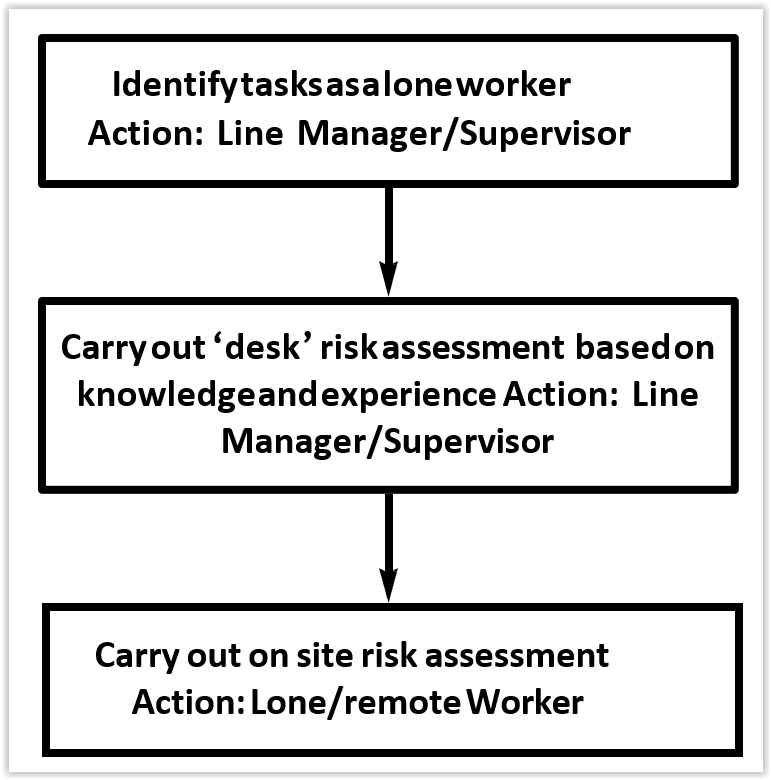Appendix 2 – Lone Working Guidance
This Appendix contains excerpts form the English Environment Agency’s Health and Safety Risk Management Manual
and the Lone Worker Code of Practice.
‘Lone working’ is where there is either no visual or audible communication with someone who can effectively get assistance in the event of an incident.
‘Remote working’ is when there are two people working in an area which is regarded as being isolated from potential rescuers, either because of the distance from inhabited locations, or because of features which make the site inaccessible.
Lone or remote working surveyors need to have the same level of safety as those working with others, or in populated locations, i.e. be in a minimal risk situation.
If it is deemed high risk for a lone surveyor to do a survey, those responsible for the safety of surveyors need to make an additional person available. Surveyors should not perform cRHS alone when there is a foreseeable chance that doing so might result in an accident, which would require a second person to be available to summon help.
Those who do work alone, or remotely, should have health and safety training which includes first-aid, map reading, using safety equipment and conflict resolution/breakaway skills.
Risk assessment
Personnel responsible for the safety of surveyors must carry out a risk assessment for lone and remote surveyors and reduce risks to an acceptable level. However, surveyors must complete a risk assessment on site and use their own judgement. If they feel they are vulnerable, they should have assistance.
Surveyors should not put themselves or others at risk.
The risk assessment may be carried out in three phases:

Lone or remote surveyors need to evaluate the following key risk criteria:
- the kind of accidents that may occur;
- the type of injuries that might result;
- the need for those injuries to receive immediate treatment;
- the chances of the injured person being able to summon help using telephone/radio equipment.
These should be looked at in addition to the cRHS Risk Assessment (Appendix 1.1).
Lone, or remote, surveyors should not do cRHS in:
- reduced visibility when there is a risk of falling into deep or fast flowing water or if there are steep banks;
- sites where banks are unstable or slippery;
- urban areas with high crime rates or known problems of physical attacks and muggings;
- sites where a hostile situation might be anticipated.
Lone surveyors should not undertake survey from within the channel if the water is above knee height, fast flowing, or turbid.
Safe system for lone working
Once risks have been assessed, and hazards identified, then risk control measures can be put in place to minimise the risks.
When designing a safe system of work, the following areas must be examined:
- work location;
- hazards;
- safety equipment;
- personnel;
- communication.
Personnel responsible for the safety of surveyors need to ensure there is a system in place to enable effective communication with, and monitoring of, surveyors working alone or remotely. They should know the surveyor’s location, route, estimated start and finish times and be able to contact them. Similarly, surveyors should be able to make contact with personnel operating their safety procedures.
Good practice procedures for lone, or remote, surveyors include reporting to their office:
- at the start of a survey;
- periodically during a survey;
- if there are problems or changes to the planned routine;
- at the end of the survey.
There also needs to be a pre-determined course of action in case a surveyor fails to report in at the end of survey work, or at the agreed times. In such circumstance, good practice requires attempts to be made to contact the surveyor at 5-10 minute intervals, and record the attempts made. If after an hour there is still no contact, search and emergency procedures should be initiated.